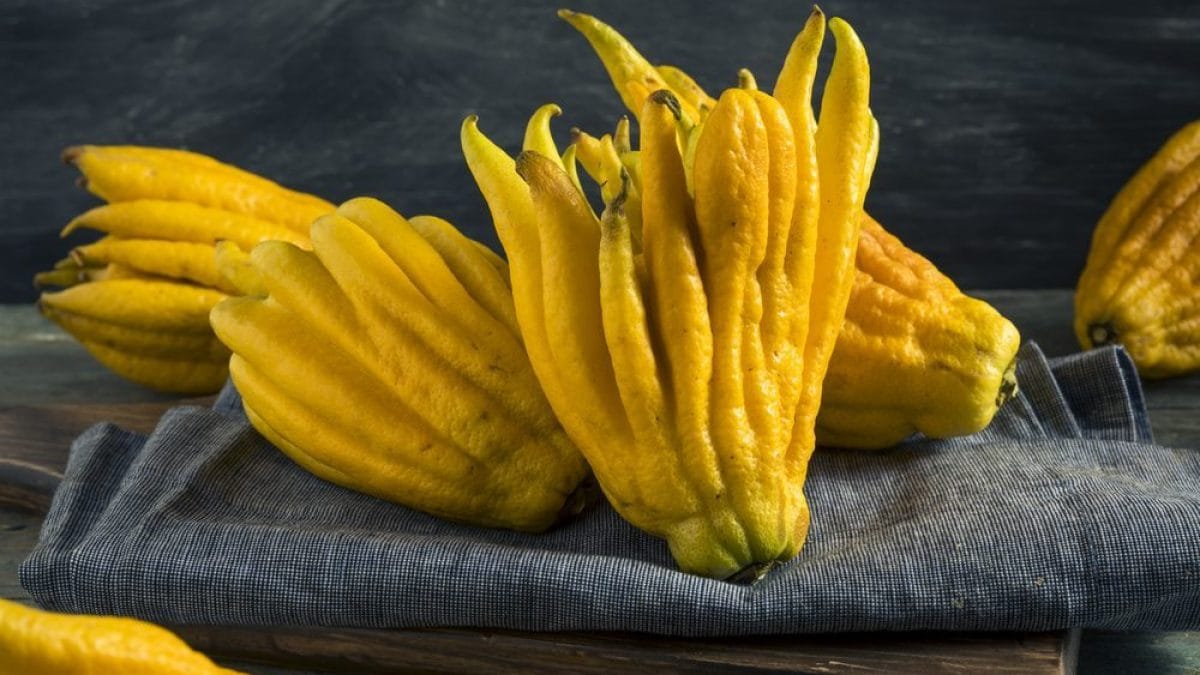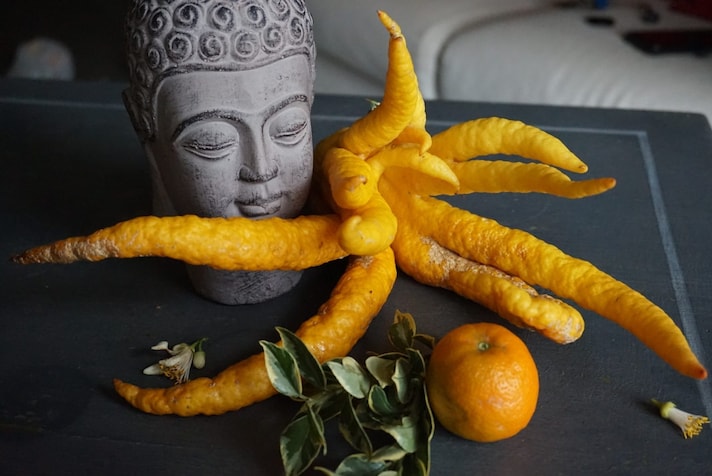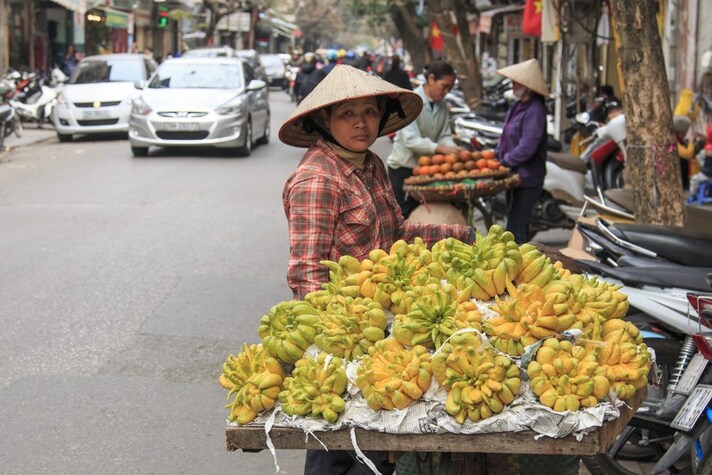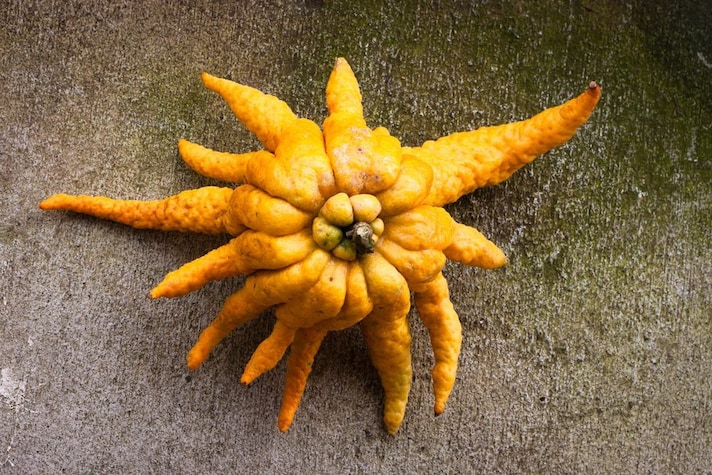
Nature is perfect and no matter how hard scientists try to find the origins of everything, we mere mortals can only admire what spontaneously takes shape on our planet. Among the citrus fruits from all over the world, one of the most particular is the “Buddha's Hand”: a curious citron (Citrus medica var. sarcodactylus) whose segments form differently than usual, giving life to a fruit that apparently resembles a hand. Its native habitat is Asia, in particular China, Japan and Northern India.
Buddha's hand citron is typically cultivated in warm, temperate climates, with California and Florida being prime regions for its growth in the United States. The tree requires a frost-free environment, thriving in USDA Hardiness Zones 10a to 11b. It is usually propagated through grafting, where a desirable variety is grafted onto rootstock that is resistant to pests and diseases. The tree flourishes in well-drained, slightly acidic soil and needs regular watering to establish healthy roots. However, it also requires good air circulation to prevent fungal infections. Buddha's hand trees tend to be slow-growing, taking several years to mature and produce fruit. During the growing season, the fruit is carefully monitored, as it is harvested by hand when it reaches full size and a bright yellow color, signaling it’s ready for harvest. This delicate process is done with care to avoid damaging the unique, finger-like segments of the fruit.
Buddha's Hand Cedar's Properties
Although it is a mutation of the classic citron, the Buddha's hand enjoys the same properties. Obviously, however, the main ones are contained in the peel and pulp since the fruit is almost always devoid of juice. The latter, despite everything, if present is rich in vitamin C and B vitamins. Vitamin E, sodium, potassium and calcium are certainly not lacking. As for the peel, it is beneficial for the intestine thanks to the presence of fibers.
Buddha's Hand cedar contains important antioxidants such as flavonoids and is used in low-calorie diets because it is fat-free. In China, it is widely used in traditional medicine, which recognizes its various properties for the cardiovascular system, the immune system and as a panacea for the respiratory tract. Furthermore, the peel plays a fundamental role: dried, it is used as a tonic and stimulant. From the fresh peel, however, a very fragrant oil is obtained that is useful for combating cellulite: in fact, combined with other hydrating oils, it is ideal for massages.

Buddha's Hand Cedar Curiosities
This particular citrus fruit seems to emanate positive influences on those who receive it: in China it is good practice to give it to families as a lucky charm. It is placed in the center of the table and then given as a gift to guests as a good omen for a long and happy life. The Chinese call it fo-shou, while in Japan it is called bushukan. The Japanese also give it as a gift for the same reason, with the difference that it is common to give it at New Year's. It is also used as a decorative element inside homes, often combined with religious ornaments. The plants can be grown in the form of bonsai.
The plant has pronounced thorns, deep green and elongated leaves, white and very fragrant flowers. Generally, flowering occurs in spring, but it blooms again several times during the year: it is therefore easy to find ripe fruits, still green or small, and flowers on the same plant. Amusing, as well as strange, is the optical effect that attracts tourists: Westerners visiting the East, walking among the local markets, mistake this fruit from afar for heads of bananas.

Culinary Uses of Buddha's Hand
A rare citron with the peculiarity of being practically all peel: it is almost always devoid of juice and often does not even have seeds; when present, however, they are fertile and can be used to grow new plants. Scratching the outer peel releases a whole series of scents that recall citrus fruits, with a very persistent intensity.
If two fruits are intertwined, they recall the image of two praying hands: this fruit is still considered one of the best gifts to offer to Buddha. By cutting the "fingers" into small pieces, they can also be eaten raw. The Buddha's Hand citron is ideal for candied fruit: its lack of internal liquid makes it perfect for this process.
Biting into the raw fruit you immediately perceive an explosion of flavors in your mouth: first of all you feel the citrus accompanied by a bitter note given by the essential oils, but also a balsamic finish. It is very suitable as an ingredient in fresh salads and for the creation of various types of liqueurs. It is ideal for both savory dishes and for pastry creations.

Advice
When buying Buddha's hand citron, you have to be careful to choose firm ones with bright yellow skin, avoiding soft and opaque ones. It is fun to use grated to marinate fish. Once cut into slices and dried, it can be stored in special breathable bags, then placed to perfume drawers and wardrobes.
;Resize,width=767;)
